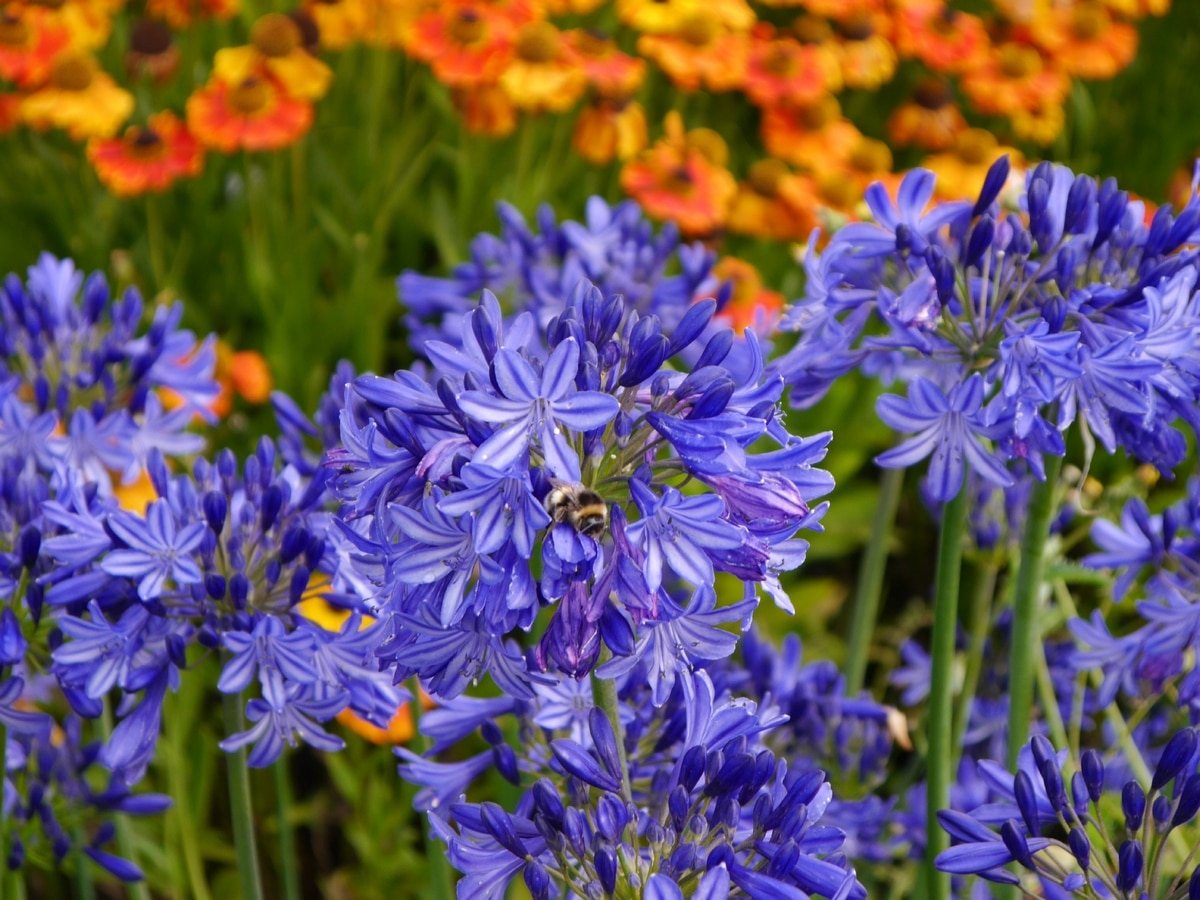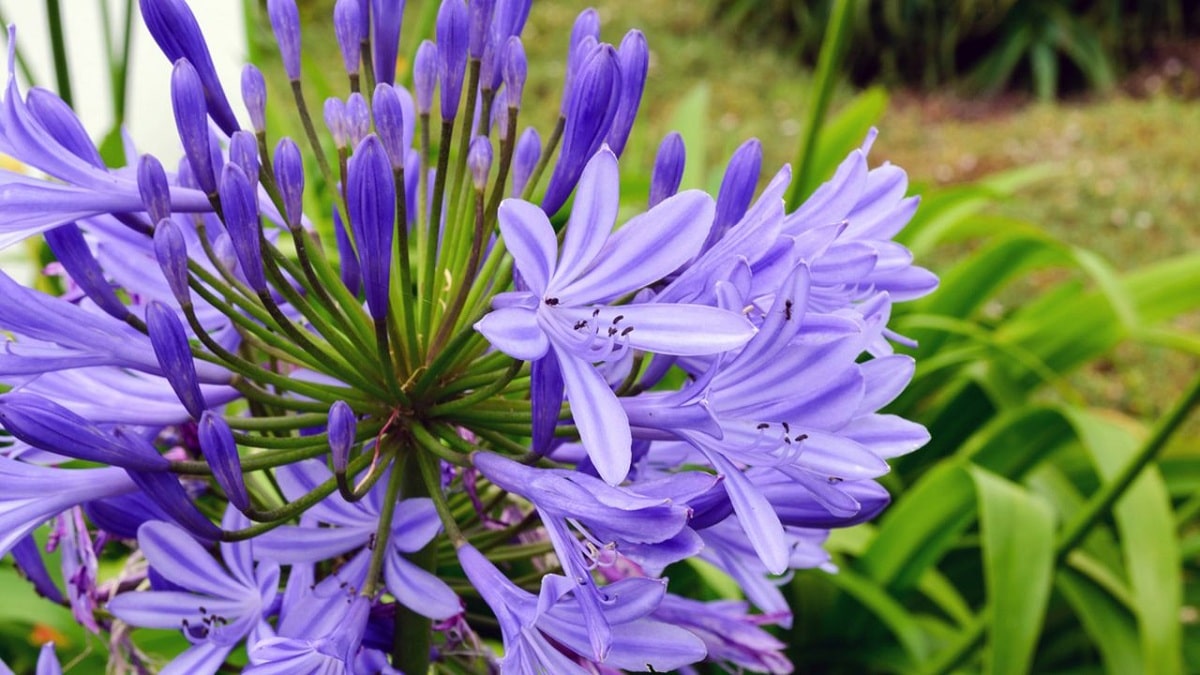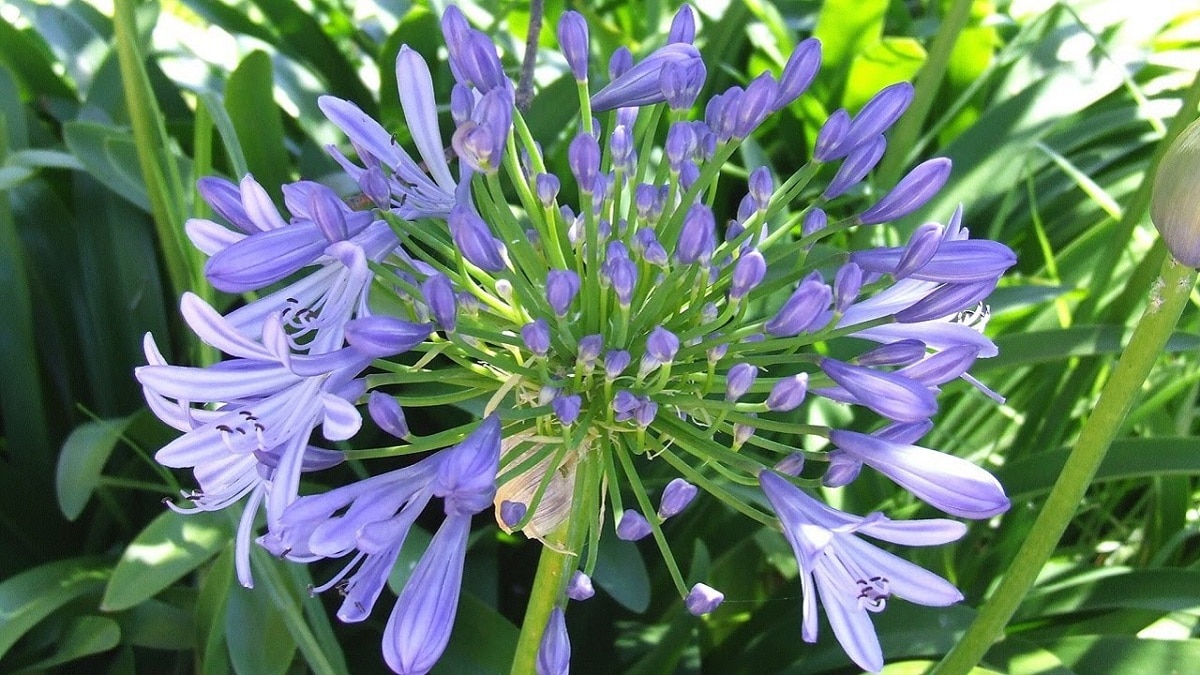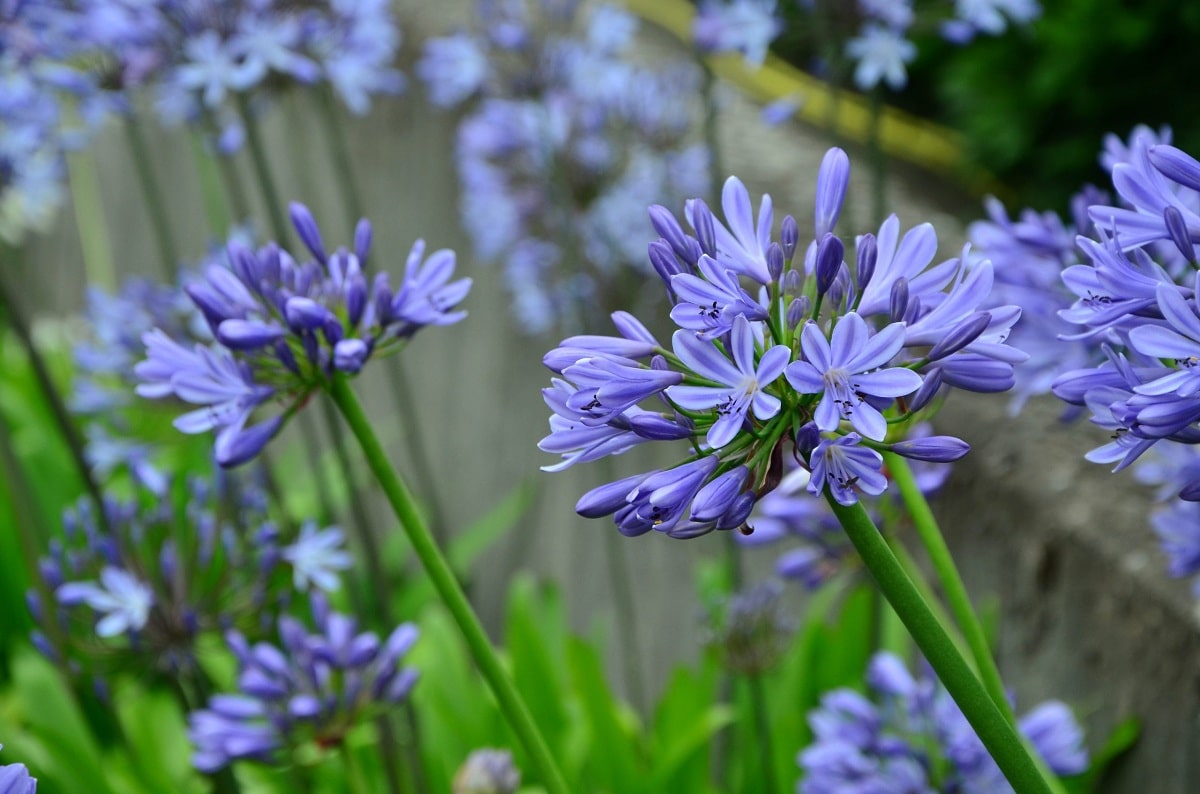
In the home, flowering plants are often used to increase the decoration of both interiors and exteriors. One of the plants that favors decoration, especially is the Agapanto. It is a rather extravagant plant that has a lot of presence and is usually grown from late spring to early fall. The agapanthus care they are not very complicated and can give you very good benefits at home.
For this reason, we are going to dedicate this article to telling you about the main care of the Agapanto, its characteristics and some other things.
Key features

Agapanthus Africanus is better known as Agapanthus, Love Flower and African Lily. It belongs to the lily family and is native to South Africa, although today you can find it in many parts of the world. It is an evergreen plant with tuberous roots. Due to the beauty of its flowers, it is widely used in the decoration of horticultural gardens. It can also be used in pots or in flower beds along walls or hedges. The shape of the flowers allows them to be cut into traditional, dried bouquets.
The Agapanto is harmonious and pleasing to the eye, since it has an average height of between 1 and 1,5 meters, linear leaves about 30 cm long and a characteristic intense green color. To this we must add its beautiful lilac or white flowers, presented in umbels of 20 to 30 flowers. The plant's flowering time is between late spring and summer, so this is the best time for Agapanthus, although other times of the year are also of great ornamental value since it maintains abundant foliage in all four seasons.
If there is an objection, it is that it takes two to three years to flower for the first time, although once it flowers, it flowers every year.
Agapanthus care

Agapanto grows well in full sun or semi-shade conditions. Depending on the climate, the best place is one or the other, since in very hot places it is ideal to give the plants a little shelter from the intense rays of the sun. Although it should be placed in a well-lit place, it is inconvenient to keep it under direct sunlight for too long. Especially in the middle of the day or at the hottest time of the year.
The plant is hardy and tolerates -15 degrees Celsius, but it is best protected from severe frosts, as the Agapanto will lose its leaves once it gets above -8 degrees Celsius. If you live in an area with cold winters, it's best to protect it and bring it indoors.
The plant can grow in all types of soil as long as it is fertile and well drained.. Soil drainage is essential so that puddles do not form due to rain and irrigation water. Watering should be regular but not excessive, since it is a plant intolerant to humidity, especially in winter. This is also one of the reasons why soil drainage must be good. The water should not accumulate in any way as the roots will rot. During flowering, watering should be increased. This helps the flowers grow stronger and more showy.
Agapanto is a plant resistant to pests and diseases, but it should be checked from time to time to avoid snail attacks, since it is fragile to them. We know that snails should only be removed manually and avoid too much moisture so they don't grow on plants. Indeed, location is essential. Find a more ventilated area where the wind prevents excess water from accumulating.
With this care, your plants are likely to grow and develop in very good condition, enhancing the landscape of the garden even if you don't have much time to care for it.
Curiosities

This plant is called the flower of love, crown or African lily. It is called the flower of love because it exists between couples for a long time. The colors of its leaves and flowers are very attractive and relaxing. In fact, the word agapanthus comes from the Greek word agape, which means love. An aspect that does not go unnoticed is that it has up to 30 flowers per stem. Even so, its ornamental value is simply eye-catching. That is, it is not a plant with any aroma.
You have to be careful with the little ones in the house and with pets as it is a poisonous plant. If ingested, it can cause diarrhea and vomiting. Additionally, sage can cause inflammation and dermatitis when it comes into contact with the skin. Some say it is the perfect metaphor for love. Love can sometimes hurt like this plant.
May breed in early fall or spring. This is the best time for it to develop well. Within Agapanto there are several species such as Albus, which has white flowers; Aureus, which has gold-colored flowers; Sapphire, which has dark blue flowers; and Variegatus, which has white leaves with a green tint.
Transplant
We have seen that Agapanthus is an adaptable plant that is easy to grow. They are characterized by long flower stems with an inflorescence ranging from white to lilac at the end. Its flowering time is at the end of spring and summer, so it can be transplanted in autumn and winter since it is in a period of vegetative rest, once planted it generally takes two to three years to flower.
Once the planting holes have been made, we add a little planting substrate to each hole to improve the soil. There is no doubt that the Agapanto is a flower full of life and color that can brighten up your house in summer. Of course, if you decide to add one to your home, keep in mind that it should be kept away from pets and children.
As you can see, the Agapanto is a quite decorative plant even though it does not have aromas. It is quite easy to care for and we only have to take into account some important aspects.
I hope that with this information you can learn more about the care of the Agapanto and its characteristics.
very good congratulations
Thank you very much
Thanks for the comments I always wanted to have an agapanthus, but I did not know how to care for it
Thanks to you.